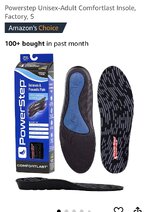I have been dealing with pain along my metatarsals/forefoot for about two months now and it doesn’t seem to be improving. It’s not serious, maybe a 3/10, but is constant when standing and walking.
It came up after a short and easy ruck in March (3 miles, 60lbs), but has persisted likely due to that fact that I am on my feet all day at work. While I am usually a runner, I had not been running for a few months leading up to this occurring, but I’d like to return to my typical schedule of running when the days get longer and weather gets warmer.
To address it, I have bought new shoes (flux adapt runners) which I wear at work. They are the same shoes I wore previously, just the old ones were worn out. They have a wide toe box and zero drop heel which I am used to.
For anyone who has had a similar issue, I’m interested in what helped you. I’ve had plantar fasciitis before and what helped that was cessation of running and a massive amount of calf stretching. It still took 6 months for it to go away and like 9 months before I got back to running.
It came up after a short and easy ruck in March (3 miles, 60lbs), but has persisted likely due to that fact that I am on my feet all day at work. While I am usually a runner, I had not been running for a few months leading up to this occurring, but I’d like to return to my typical schedule of running when the days get longer and weather gets warmer.
To address it, I have bought new shoes (flux adapt runners) which I wear at work. They are the same shoes I wore previously, just the old ones were worn out. They have a wide toe box and zero drop heel which I am used to.
For anyone who has had a similar issue, I’m interested in what helped you. I’ve had plantar fasciitis before and what helped that was cessation of running and a massive amount of calf stretching. It still took 6 months for it to go away and like 9 months before I got back to running.

